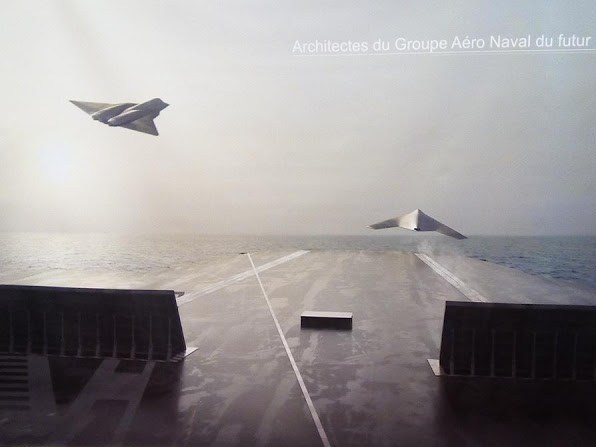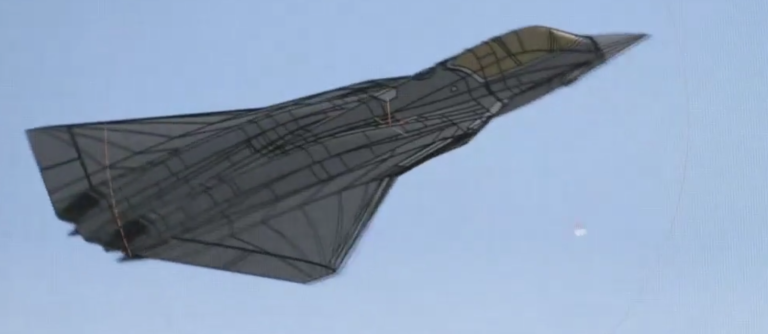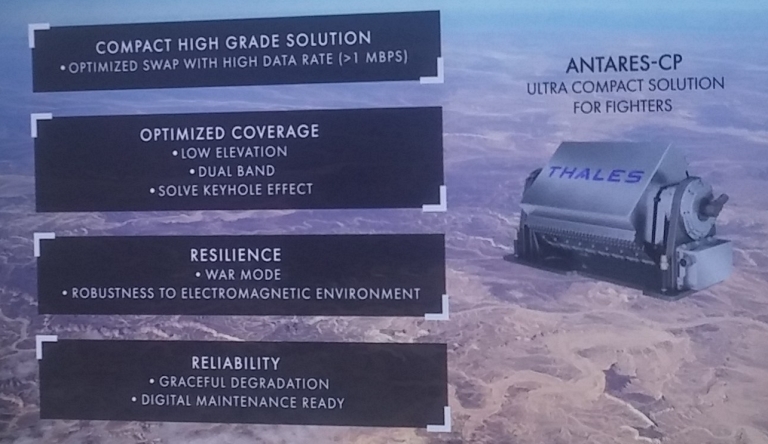Une version française de cette article a été publiée sur portail aviation
The Future Combat Air System, or FCAS, is entering a new phase. It has been launched last April by Germany and France, and Eric Trappier, the CEO of Dassault Aviation, just announced that a new contract would be signed by the end of January. The aim would be to fly a demonstrator for a piloted aircraft by 2025. FCAS is a major project, a symbol of the strenghtened defense cooperation between the two countries, which should be reaffirmed by a new treaty to be signed on January 22.
Beyond politics, the French and German aim to replace their current fleets of combat aircraft by a new system capable to overcome the most modern air defense systems, with an introductory date around 2040. Contrary to previous european defense projects like the Tornado or the Eurofighter aircrafts, FCAS will not be restricted to designing a single fighter jet. Rather, it will design a force structure, comprising fighters, drones, tankers, advanced early warning aircrafts and complex weapons, each one of them being linked up to a common network to share information and react instantly to ennemy threats, which are envisionned to become increasingly connected as well. Indeed, ground radars, command centers and surface to air missiles will probably be networked with jam-resistant links. Future air warfare should consequently see the air defense network face the FCAS offensive network.
The project is currently in definition phase, and is headed in France by French Air Force general Breton. As it is a very technical endeavour, the French Defense procurement agency, DGA, is strongly involved, under the leadership of Chief Armament Engineer Koffi. Both were present at the forum Innovation Défense which was held in Paris at the end of November, and gave a conference on the role of innovation in the FCAS project. Here is a retranscription:
General Breton:
The Future Combat Air System FCAS is due to come into service in 2040, 2040 is a long way off. It is therefore necessary to be flexible and agile to be able to constantly adapt to the unexpected.
One way to do this is to use an app model like on smartphones: you can install a new application in a few clicks, which is currently impossible on a fighter aircraft because you have to check that any new software does not have an impact on the flight system for example, while these two software must communicate together. FCAS will therefore have to be architected to be able to integrate new applications by ensuring that they do not consume all the memory or battery to use the smartphone example.
Another way to innovate is through new uses of existing systems: for example, by using the management equipment for the link16 datalink that equips our aircrafts, we can divert it from its initial role as a pure data link by using it for training, by injecting dummy targets to make pilots work on the reaction to be given to them.
An important aspect of innovation on FCAS will be networking: currently on the Rafale, the pilot mainly uses his own sensors and some of the information provided by the network. In FCAS, the proportion will be reversed. The management of the data transfer by the network will be done independently of the pilot, who will see the data merged and will supervise the process.
The analyses we conducted on FCAS are as follows: the missions will be more or less the same as today’s missions. Threats, on the other hand, will have changed significantly. Long-range air defences and denial of access will have spread, enemy aircraft will be stealthy, the ennemy will have swarming and collaborative UAVs, hypersonic missiles, integrated land/sea/air/space manoeuvre, and cyber capabilities. If these capacities are the prerogative of a few states today, tomorrow any actor, even a private one for cyber, will have some or all of these capacities.
Faced with this, FCAS provides a system response, with different components. A cruise missile component will deal with high value targets. The highly defended threats will be engaged by remote carriers – drones capable of performing reconnaissance, jamming or even striking. Depending on the defence encountered by the system, it will send either its fast components or its stealth components to counter it by adapting.
AA interception and defence will be carried out by a manned fighter aircraft, as well as specialized missions [Editor’s note: nuclear deterrence]. The pilot will bring his intelligence to the system, and will be the captain of this football team whose wingers will be the drones and remote carriers.
[Editor’s note: Airbus published a video on its vision of the FCAS that shows what the general is describing:]
The 1st circle of the FCAS will therefore consist of an evolved Rafale that will be replaced by a new aircraft in the long term, because there is a need for more stealth and more energy generation than what the Rafale can provide. There will also be remote carriers who will have to saturate the enemy defence, cruise missiles and perhaps a combat drone.
The 2nd circle will include satellites, refuelling aircraft, radar aircraft, naval ships, and the assets of our allies, hence the importance of standardizing data links with our allies.
The aircraft will also be able to be launched from an aircraft carrier.

Armament Engineer Philippe:
To achieve this system in 2040, innovation will have to be carried out on 3 axes: First, technological innovation, the modularity of the system architecture as well, and finally new ways of operating between the State, industry, SMEs and scientific research.
On technology, the big bricks are:
- Stealth, a sensitive area if ever there was one. To give you an example, we want to remove the tails of the future fighter aircraft because they generate a strong radar return, but even if we know how to fly subsonic aircrafts without tails as the Neuron UCAV showed, for supersonic flights the absence of tails is a flight control problem.

Dassault’s tailless, vectored-thrust design for its next-gen fighter - Maneuverability: if you remove the tails, you lose in maneuverability. We plan to use fluidic control surfaces to reduce the size of the control surfaces in general, as well as vectored thrust, mechanically or by fluid injection.
- Propulsion: we will need new, warmer engines with more power generation capacity
- Sensors, with the development of tile antennas combining radar, listening, communication and electronic warfare. For optronic systems we are oriented towards multispectral. To listen, it will be necessary to listen to all the bands, with an effort to be made towards the lower ones. We need a new antenna design with more gain.

- Artificial Intelligence: AI will have several applications, from the virtual assistant for the pilot to the adaptation of the man-machine interface according to the pilot’s cognitive load, for example, as well as the automatic generation of mission plans by the aircraft, the automatic adaptation of sensors to the operating environment and predictive maintenance. The use of AI to exploit sensor data will be massive.
- Weapons. We will need new multimode infrared + radar autodirectors, and ammunition that can communicate with each other to work cooperatively.
- Remote carriers, non-reusable drones ranging from a few kilos to 1 ton, will require a significant effort on cost reduction, miniaturization, and swarming flight
- And finally, connectivity, with a high-speed but discreet intra-patrol link, a high-speed satellite link, or even optical links. The network architecture will combine datacenters and edge computing on platforms flying on the edge of the network. Cybersecurity will be a key issue.

On the aspect of modularity, which is necessary to be able to adapt quickly to new threats, it may seem contradictory to stealth: indeed, on a stealth aircraft nothing is carried externally, so it is difficult to add new capabilities. Our answer lies in the development of modular bays with standardized interfaces for weapons, and reconfigurable bays for sensors.
Finally, at the level of State/industry relations, we need a new approach to system engineering to better capture the need. For this reason, we have set up for the first time a shared State/industry work environment based on Dassault software. We will also use end-to-end simulation for the first time.
We must also seek creativity in the civilian sector, either by entrusting it to tier 1 manufacturers or by using startup accelerators. For example, for the “Man-Machine Teaming” Upstream Study Plan, the industrial integrators have federated an ecosystem of SMEs and start-ups, to which we have submitted a call for projects, and we have selected the most promising.
To make the various players work together and reduce the risks, we have a demonstrator policy, with a demonstrator of the future fighter aircraft around 2025, a ground engine demonstrator, and later perhaps a combat drone demonstrator.
Question: What about interoperability with the F-35?
Breton: It is essential to be interoperable because we rarely work alone. The F-35 works like the iphone, it’s a captive system. We need to impose more open exchange standards at NATO or European level.
Question: Will fossil fuels still be used in 2040?
Philippe: Yes
Question: The full introduction into the forces will be in 2040, what will happen in the forces between now and then?
Breton: The Rafale will benefit from tile radar, and a connectivity upgrade to integrate it into FCAS. We will introduce remote carriers quickly so that we can test them in operation. We will also integrate AI into the Rafale around 2025.

Great interview, thanks.
What are fluidic control surfaces?
LikeLike
Looks like the first part of this is the evolved Rafale. Is that what the F4 Rafale program is?
LikeLike
Yes, Rafale F4 is the first step towards FCAS. It will have increased connectivity.
LikeLike